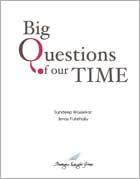Thailand: Growing emphasis on E- Governance
|
|
March, 2012
By Jot Prakash Kaur
|
Thailand has been implementing policies and programs to promote use of information and communication technology (ICT) as a tool for better administration, transparency and accountability of government departments and increase the effectiveness of various development programs. The successful implementation of ICT in government departments (e-governance) has the potential to positively impact the lives of millions of poor citizens living across Thailand in the long run.
The new National Information and Communication Technology master plan (IT 2010) was launched in 2002-03 to promote use of inexpensive ICT tools to provide good governance to the citizens. The government has been following a five step policy for developing government websites; Publish (information that could be accessed by the common masses), Interact (two way communication process between the government and the users of the websites), Transact (transactions that can be done by the citizens online), Integrate (integration of interlinked websites of various government departments) and Intelligence (websites to be made user friendly).
E-governance is around a decade old concept in Thailand. ICT applications are used to integrate the government with citizens, businesses, employees as well as with provincial administrations. Since the implementation of the ICT 2010 policy, the government has created websites to file income tax, register private companies and obtain driving licenses. ICT is also being used to provide national identification cards through the registration of finger prints of the citizens in three southern provinces of Thailand; this initiative is aimed to address the insurgency in the region. At present, at least twenty Thai ministries have their own call centers which provide free information to citizens.
Over the past few years, several programs have been launched which are aimed at using the tool of e-governance to benefit people belonging to the lower classes. The government launched one of the first ICT initiatives, in early 2000s, known as the �€˜National Center against Poverty�€™. The Center is a web portal created for the poor to register their income and debt. In four years of the creation of the portal, 8.5 million registered, with the formal debt assessed to be around USD 18 billion and informal debt USD 132 million. The aim of setting up such a portal was to use the data for planning poverty eradication programs, especially by the government. In 2006, �€˜Corruption Watch�€™ website was launched to help the citizens report incidents of corruption in the public sector.
During the five year period between 2001 and 2006, several e-governance initiatives targeted towards the reduction of poverty levels were undertaken. The Ministry of Interior and the Department of Local Administration Promotion launched a website for sub-districts (Tambon) known as the Internet Tambon. The website aims to reduce the digital divide between the urban and rural areas of Thailand by empowering rural people to access government information and programs. The Ministry of Commerce with an aim to connect the rural manufacturers with national and international markets launched �€˜ThaiTambon.com�€™. Further, ThaiRuralNet was created to disseminate relevant agriculture information such as crop prices to rural farmers. RakBanKerd web portal has been developed which provides information about community funds allocated to various villages and urban areas, the interested parties such as international NGOs and businesses are likely to use the database to plan out funding of various regions and developmental programs across the country.
ICT in governance is likely to have a positive impact on millions of rural poor in the future. The knowledge of current crop prices and buyers in markets could help rural farmers in getting better prices for their produce, thus increasing their disposable income. The use of ICT, �€˜One Tomban One Product�€™ program, in promotion of small-scale entrepreneurs manufacturing local products in rural areas could provide alternative employment generation potential for thousands of men and women. In the first year of its implementation, the project was able to increase the overall income of the participants by around 30%. ICT as a tool for disseminating information about various social security programs could help the government in reaching out to the specific section of the society, such as rural lower middle class. For instance, the government created a web portal �€˜KhonThai.com�€™ which posted information regarding the development projects that have been implemented in the sub-districts along with the budget of a particular area. �€˜Mahathai.com�€™ a web portal by the Ministry of Interior was created to disseminate information about online government services. The government is also implementing a web portal for job seekers to register for employment opportunities. This could particularly benefit the rural educated but unemployed population as they generally have less access to employment agencies as compared to their counterparts in urban areas.
In the long run, a sizable number of Thai people are expected to use mobile phones and internet based governance information and services as both the technology tools are growing in Thailand. In early 2011, the mobile penetration rate was said to be 105% or 72 million mobile phone connections and reach of the internet is over 20%, one of the highest in the Southeast Asian countries. The government has also taken initiative to help people, especially in the rural areas to access internet at cheap rates. Increasing awareness and increasing percentage of educated population in rural areas may also act as a catalyst to make ICT based governance tools popular amongst a large section of disadvantaged people.
Related Publications
-
.jpg&maxw=50)
Big Questions of Our time: The World Speaks, 2016
Download:Big Questions of Our time: The World Speaks _Full Report
-

-

Second Freedom South Asian Challenge 2005-2025, 2005
read more
Download:Second Freedom South Asian Challenge 2005-2025 Full Report
Related latest News
Related Conferences Reports
-

Global Challenges Conference, October 2016
Download:Global Challenges Conference Report
-

Conference on Responsibility to the Future: Business, Peace and Sustainability, June, 2008
Download:Global Security and Economy: Emerging Issues


